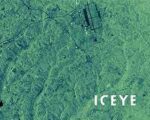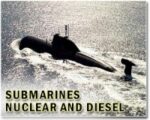Emerging radar and missile technologies are reshaping the aerial battlefield by eroding what was once considered a sanctuary for combat aircraft—low altitude flight. According to a senior Royal Air Force officer and corroborated by multiple defense analysts, modern integrated air defense systems (IADS) equipped with advanced sensors and precision-guided munitions are now capable of detecting, tracking, and engaging aircraft flying at treetop levels. This development has major implications for tactical aviation doctrine and the survivability of legacy platforms in contested airspace.
The End of “Hiding Behind the Horizon”
For decades, fast jets relied on terrain masking—flying at extremely low altitudes—to avoid detection by radar systems constrained by line-of-sight limitations. The curvature of the Earth provided a natural blind spot for ground-based radars, allowing aircraft to approach targets under the radar coverage envelope. However, Group Captain Matt D’Aubyn of the Royal Air Force recently stated that this tactic is becoming obsolete due to advances in radar technology that have effectively “flattened the Earth” from a sensor perspective.
“We used to be able to hide behind the horizon,” D’Aubyn noted during his remarks at an airpower conference in London. “That’s no longer true.” This assessment reflects a growing consensus in NATO air forces that adversary sensor networks—particularly those fielded by Russia and China—have closed many of the gaps previously exploited by Western airpower.
Technological Drivers: AESA Radars and Multi-Static Sensor Networks
The primary enablers behind this shift are active electronically scanned array (AESA) radars with high resolution modes and distributed sensor architectures. AESA radars offer faster beam steering, greater resistance to jamming, and enhanced low-RCS (radar cross section) detection compared to legacy mechanically scanned systems. When deployed in overlapping arrays across a theater—on ground vehicles, ships, airborne early warning platforms (AEW&C), or tethered aerostats—they can create persistent surveillance bubbles even at low altitudes.
Moreover, multi-static radar configurations—which involve spatially separated transmitters and receivers—can exploit bistatic angles to detect stealthy or low-flying targets that would otherwise remain hidden from monostatic systems. These networks are increasingly integrated into layered IADS frameworks such as Russia’s S-400/S-350 complexes or China’s HQ-9B batteries augmented by passive detection sensors like VERA-NG or Kolchuga-M.
Missile Systems Now Optimized for Low-Level Intercepts
Detection is only half the equation; engagement capabilities have also improved significantly. Modern surface-to-air missile (SAM) systems now incorporate seekers optimized for low-altitude engagements—including active radar homing (ARH), infrared imaging (IIR), or dual-mode guidance. Systems like Russia’s 9M96E2 (used with S-350 Vityaz) or China’s LY-80N can engage targets flying below 100 meters above ground level with high probability of kill (Pk).
- Sensors: Dual-mode seekers improve terminal accuracy against maneuvering targets.
- Kinematics: High-G maneuverability allows missiles to counter evasive flight paths typical of nap-of-the-earth tactics.
- Cues: Integration with over-the-horizon sensors ensures rapid cueing even without direct line-of-sight.
This evolution means that even if an aircraft avoids initial detection through terrain masking or electronic warfare measures, it may still be intercepted once it enters an engagement zone covered by cued fire-control radars or IRST-equipped platforms such as Pantsir-SM or HQ-17AE SHORAD units.
Tactical Implications for NATO Air Forces
The erosion of low-altitude sanctuaries forces a reevaluation of traditional penetration tactics employed by strike fighters like the Tornado GR4 or F/A-18 Hornet. In conflicts where adversary IADS remain intact—as seen in Syria or potentially Taiwan—Western forces may no longer be able to rely on terrain-following ingress routes without incurring unacceptable attrition rates.
This reality is driving several shifts in doctrine:
- Increased reliance on standoff weapons: Platforms like F-35s now carry Joint Strike Missiles (JSM) or AGM-158 JASSMs launched from outside contested zones.
- Emphasis on SEAD/DEAD missions: Suppression/Destruction of Enemy Air Defenses remains critical before any manned penetration attempt.
- Greater use of UAVs/UCAVs: Uncrewed assets like MQ-9B SkyGuardian or Loyal Wingman-type drones can scout ahead without risking pilots.
The RAF itself is investing heavily in these domains through programs such as Project Proteus (for collaborative combat UAVs) and SPEAR Cap 3 missiles designed for deep strike from safe distances. Similarly, Germany’s FCAS program envisions next-generation fighters operating alongside remote carriers with ISR/EW payloads tailored to penetrate dense A2/AD environments.
The Role of Electronic Warfare in Countering Advanced IADS
If terrain masking is no longer sufficient protection against modern IADS networks, electronic warfare becomes even more essential. NATO forces are enhancing their airborne EW capabilities through platforms like EA-18G Growler upgrades (Block II), EC-37B Compass Call recapitalization programs, and new jamming pods integrated onto Eurofighter Typhoons under Project ECRS MkII.
Evolving EW strategies include:
- Barrage jamming against wideband AESA search radars
- Spoofing techniques targeting multi-static arrays via false angle-of-arrival data injection
- AIR/GROUND coordination: Using cyber tools to degrade C4ISR nodes feeding SAM batteries
D’Aubyn emphasized that future survivability will depend not just on stealth geometry but on dynamic electromagnetic maneuver warfare—a domain where software-defined radios (SDR), AI-enabled threat libraries, and real-time spectrum management will play decisive roles.
A New Paradigm for Air Superiority?
The flattening of Earth from a sensing perspective represents more than just a technical milestone—it marks a doctrinal inflection point. As adversaries deploy increasingly networked sensor-shooter grids capable of reaching into former safe zones at both high and low altitude bands, Western planners must rethink how they achieve air superiority without incurring catastrophic losses early in conflict phases.
This likely entails greater investment not only in stealthier platforms but also resilient kill chains involving space-based ISR cues feeding AI-assisted mission planning tools capable of identifying seams in adversary coverage maps dynamically. The days when fast jets could skim tree lines undetected may be over—but new approaches leveraging autonomy, saturation tactics using swarms/UAVs, cyber disruption campaigns against IADS nodes—and precision standoff fires could restore some measure of initiative back into NATO’s offensive calculus.










